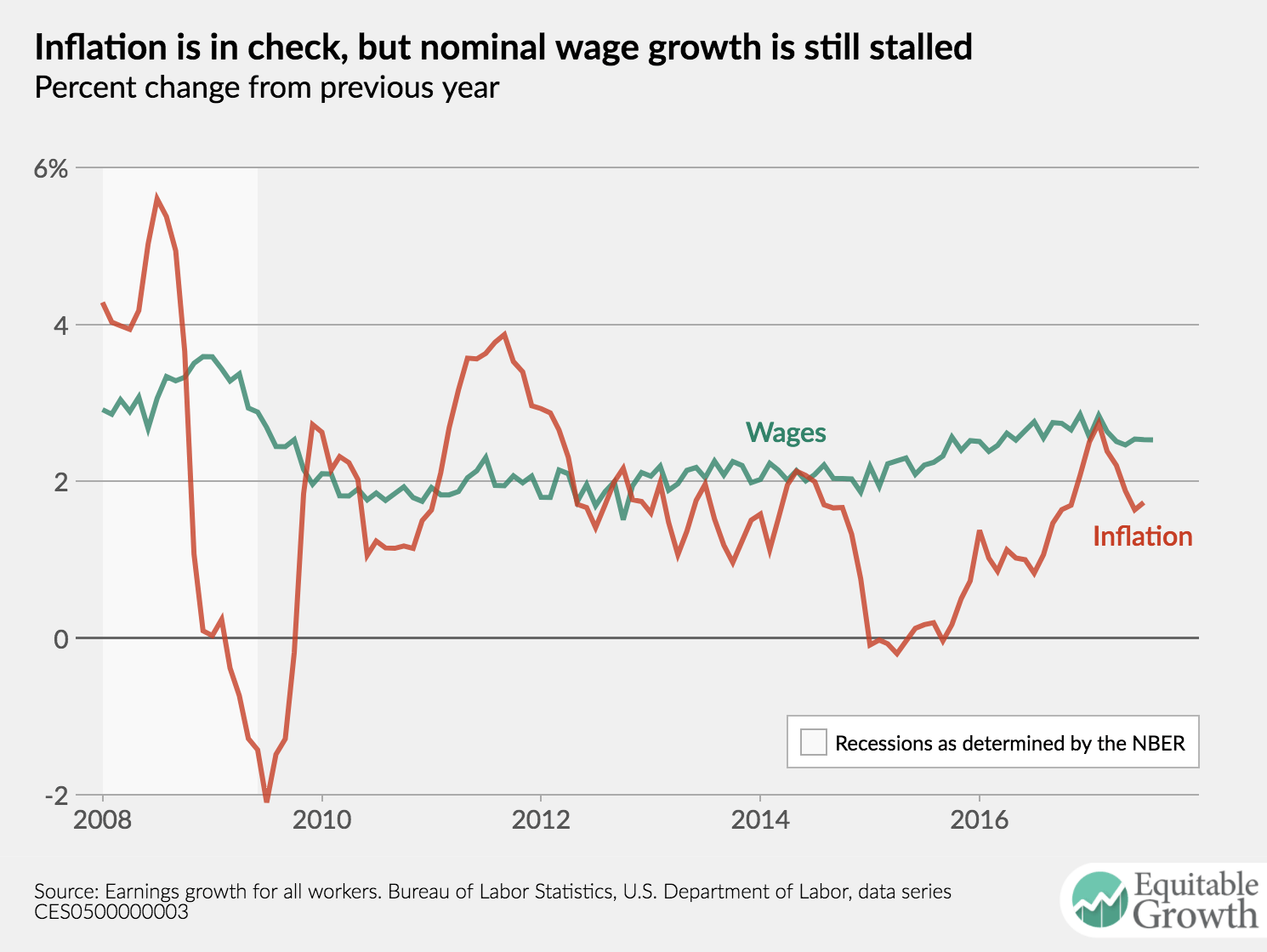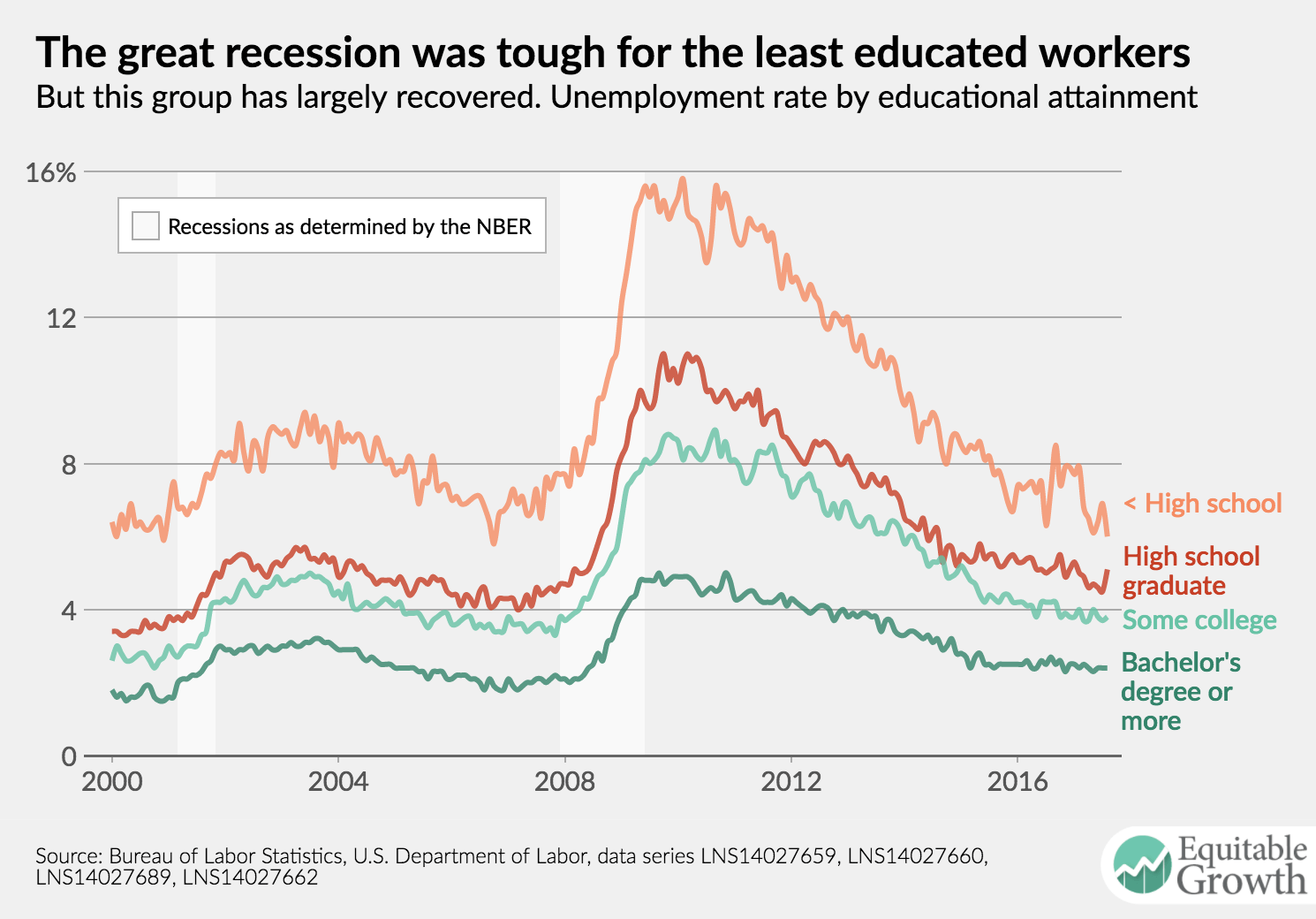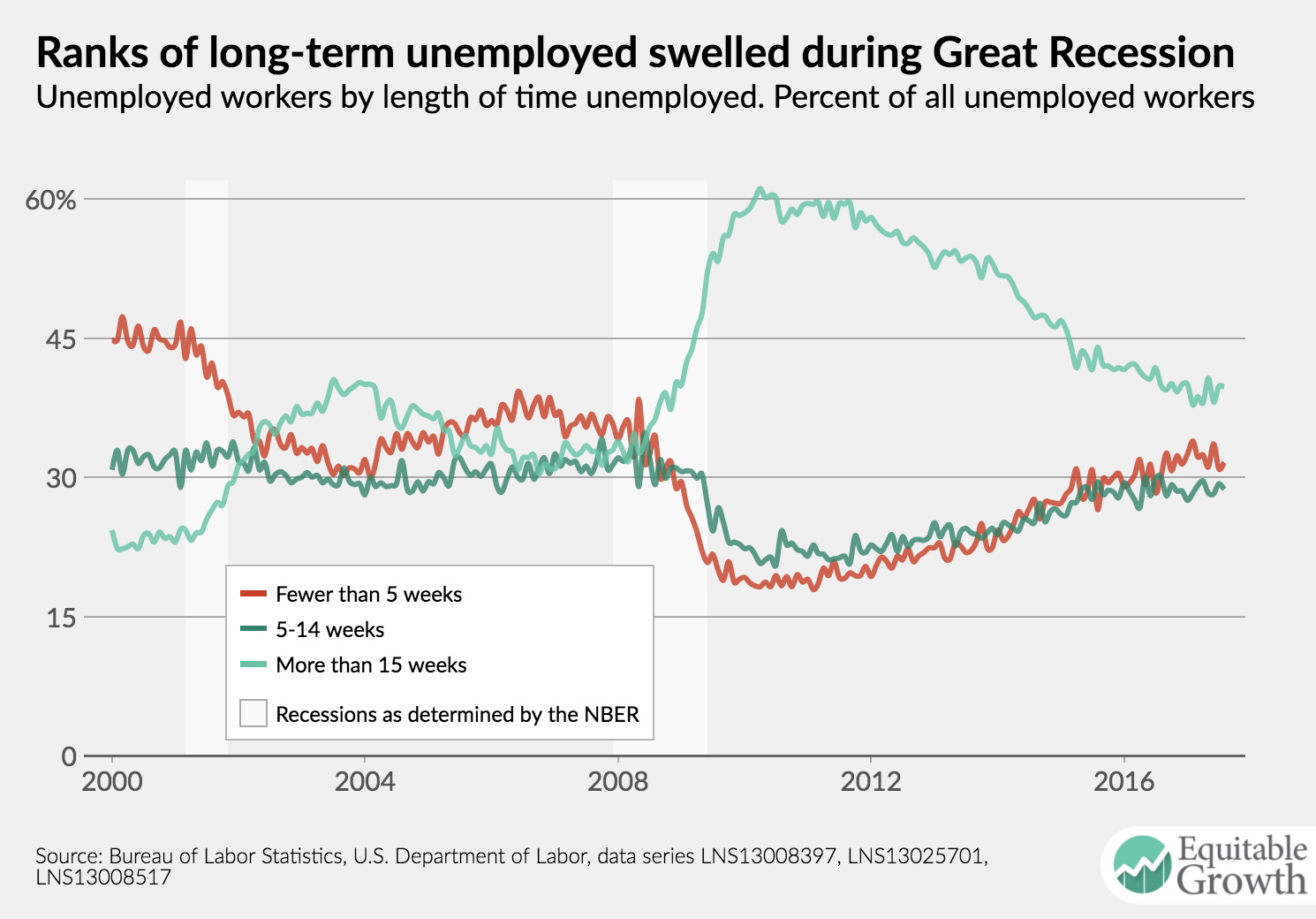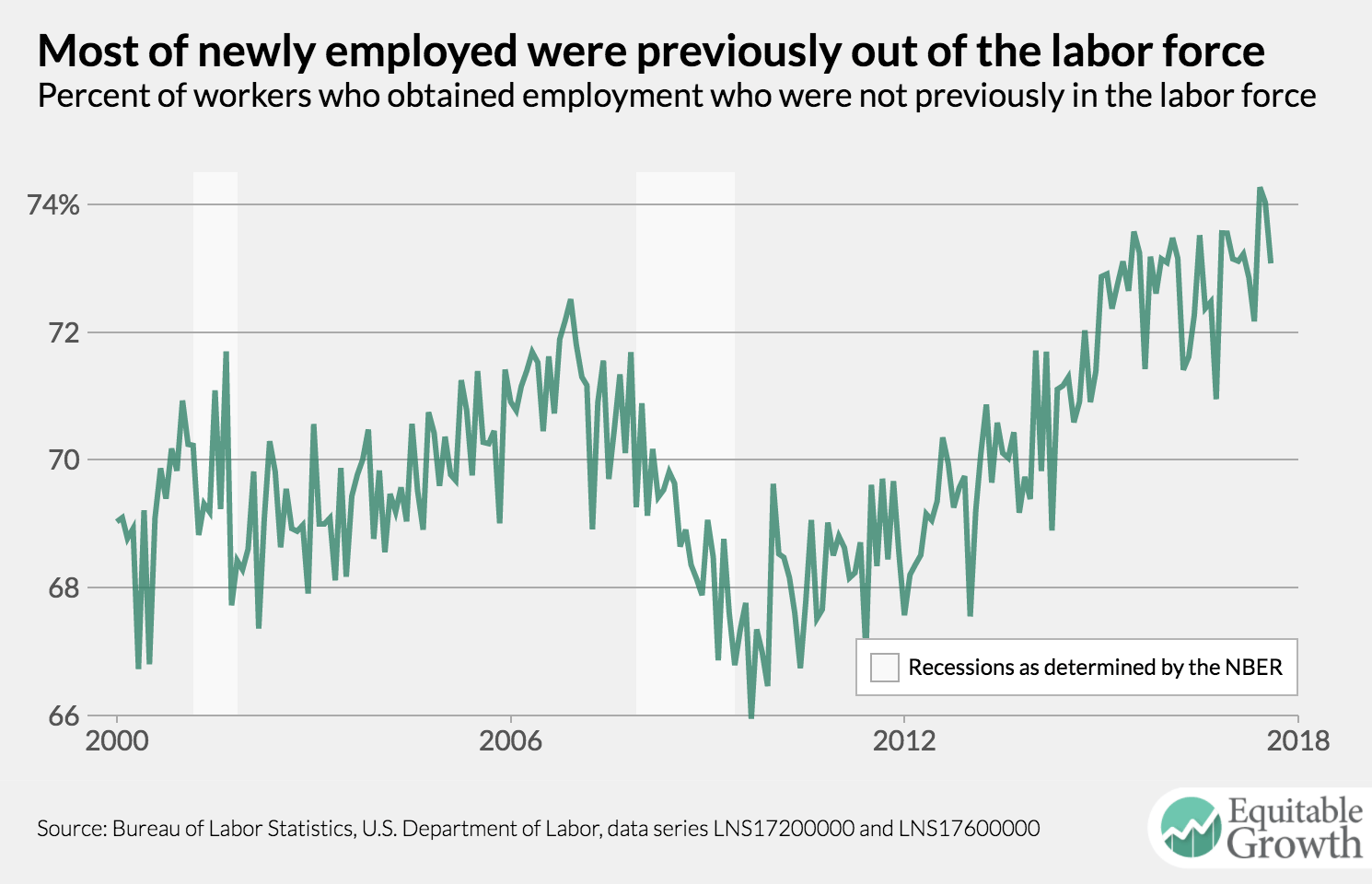Must-Read: Brink Lindsey: The End of the Working Class: “The nightmare of the industrial age was that the dependence of technological civilization on brute labor was never-ending… https://www.the-american-interest.com/2017/08/30/end-working-class/
…Those old nightmares are gone—and for that we owe a prayer of thanks. Never has there been a source of human conflict more incendiary than the reliance of mass progress on mass misery…. But the old nightmare, alas, has been replaced with a new one…. Now it is feelings of uselessness that threaten to leach away people’s humanity. Anchored in their unquestioned usefulness, industrial workers could struggle personally to endure their lot for the sake of their families, and they could struggle collectively to better their lot. The working class’s struggle was the source of working-class identity and pride.
For today’s post-working-class “precariat,” though, the anchor is gone, and people drift aimlessly from one dead-end job to the next…. The scale of the challenge facing us is immense. What valuable and respected contributions to society can ordinary people not flush with abstract analytical skills make? How can we mend fraying attachments to work, family, and community?
There are volumes to write on these subjects, but there is at least one reason for hope. We can hope for something better because, for the first time in history, we are free to choose something better. The low productivity of traditional agriculture meant that mass oppression was unavoidable; the social surplus was so meager that the fruits of civilization were available only to a tiny elite, and the specter of Malthusian catastrophe was never far from view. Once the possibilities of a productivity revolution through energy-intensive mass production were glimpsed, the creation of urban proletariats in one country after another was likewise driven by historical necessity. The economic incentives for industrializing were obvious and powerful, but the political incentives were truly decisive. When military might hinged on industrial success, geopolitical competition ensured that mass mobilizations of working classes would ensue.
No equivalent dynamics operate today. There is no iron law of history impelling us to treat the majority of our fellow citizens as superfluous afterthoughts. A more humane economy, and a more inclusive prosperity, is possible…. There is a land of milk and honey beyond this wilderness, if we have the vision and resolve to reach it.






